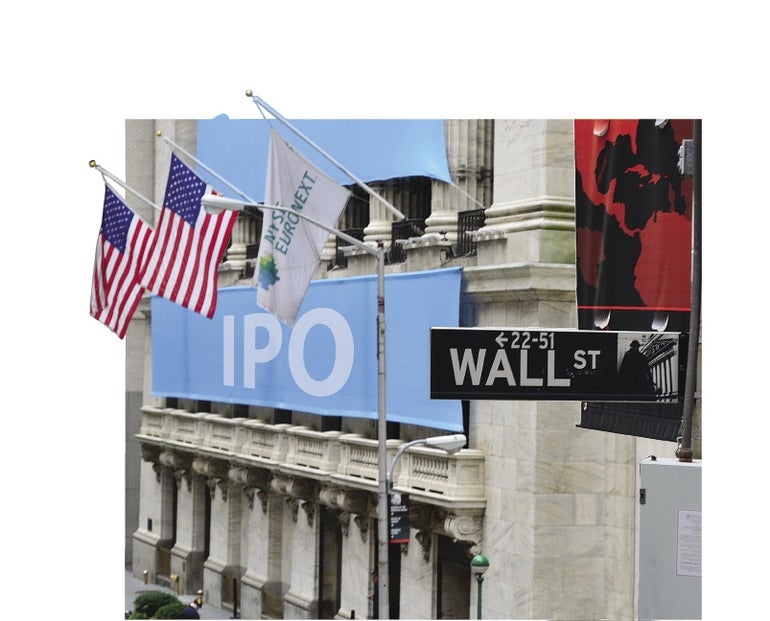A number of Central Massachusetts companies have recently gone public in what experts say is one of the strongest markets for initial public stock offerings in years. Taking a company public can be a means to accelerate growth, but also presents challenges beyond those faced by private companies.
The 2014 IPO market is at its most active since 2000. Over the last two years, 62 companies across the United States went public, according to Kathleen Smith, a principal at Renaissance Capital, a manager of IPO-focused exchange traded funds based in Greenwich, Conn. Moreover, stock in many of the companies that recently went public are trading well, leading to continued interest in the IPO market.
“It’s an above average time to … go to market,” Smith said. “We expect the activity to continue to be strong.”
At its core, taking a company public revolves around money. A firm gains the ability to access an initial round of funding, but can also offer additional stock later. This offers a straightforward, and in theory, less expensive, means to raise capital.
“For most companies, if they want to grow to a billion or two billion dollars, they need public access,” said Jim Parslow, the CFO of Worcester’s World Energy Solutions, which went public in 2006. (The company became part of Boston-based EnerNOC this year.)
While access to the funds can be important to growth, being publicly traded also places a strict value on the company, Smith said. When a firm is publicly traded, there is a daily, agreed-upon value. While some may argue over the accuracy of a stock’s price, there’s little dispute on the value compared with that of a private firm, Smith said.
“It’s an achievement, and you can say you are worth a certain amount in the way people are buying and selling your securities,” she said.
Another benefit: visibility
But an IPO can create more visibility for a company, and that can be nearly as important as money for a growing firm, especially one in a new field. When ReWalk Robotics, whose U.S. headquarters are in Marlborough, went public in 2014, it became much easier to find partner hospitals for its exoskeleton, which allows paralyzed people to walk, CEO Larry Jasinski said. The company is now a known entity, with others approaching about collaborating, he said.
World Energy experienced a similar visibility bump when it went public, Parslow said. “It gave us instant credibility in the marketplace and not just the investment marketplace, but with our customers,” he said. “There was very limited visibility for us prior to the public offering.”
But being a public company is not all about money and visibility. There’s the added responsibility of meeting regulations and responding to more investors.
Rules for public companies demand more stringent reporting of financials. Parslow estimated that World Energy had spent an extra $500,000 to $1 million a year to track and report financial information as a public company.
Justin Renz, the CFO at Karyopharm Therapeutics, which went public in 2013 when it was based in Natick (It moved to Newton last year.), said it takes effort to balance regulatory pressures with steady growth.
“It’s really threading a needle of keeping people going as quickly as they can and yet keeping people in compliance with rules,” Renz said.
Being public also opens up the company to more outside influence. During an IPO, said Parslow, often just a handful of investment companies purchase shares.
Enter the ‘activists’
Yet, companies also can face “activist investors” who purchase large shares, then try to change its direction. For example, activist investors pressured Framingham-based Staples to buy its chief rival, Office Depot, before it did so last month. Activists applied similar heat to EMC, of Hopkinton, to spin off its VMware unit as a way to boost the stock price.
These investors often target older firms, where they feel there is room to boost stock prices through changes to the company, Smith said. The additional outside influence can be beneficial to shareholders if company officials have become complacent, Parslow said.
Going public is ultimately what a company and its investors make of it. It can give initial investors and the company’s founders an opportunity to recoup part or all of their investment, Smith said. Initial investors will sometimes push for an IPO as a means to divest, as these investment firms are in the business of turning over investments.
“These investors … want a return and it can be very challenging to have private investors,” she added. “They’re financial people, not usually 30-year (stockholders).”
Ultimately, each company must evaluate whether it should go public or use private funds to finance sufficient growth. In the technology and biopharmaceutical industries, it’s nearly impossible to secure enough funding privately to bring a product to market, Renz, of Karyopharm, said. But other industries may be able to raise capital privately without the outside influence and stricter reporting regulations, he added.
Smith cautioned that while the current market is strong for companies pursuing IPOs, they must research how similar companies have performed following their initial offerings since it’s “not a market where every company is greeted with open arms.” But overall, companies are doing better homework before coming to market than they did 15 years ago, she said.
“I can’t imagine why any company that wants to be big wouldn’t think an IPO is in their future. To us, it is a no-brainer,” Smith said.
ReWalk’s Jasinksi said going public should be viewed not as an endpoint, but a jumping-off point for the next stage of the company.
“The IPO in our case was a beginning, not an exit,” he said, explaining that everyone involved in ReWalk has renewed energy and belief in their work. “None of us are worried about an exit. We are worried about building.”

